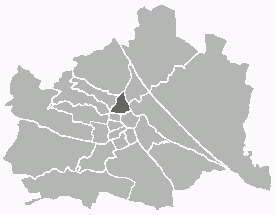
Alsergrund is the ninth district of Vienna, Austria. It is located just north of the first, central district, Innere Stadt. Alsergrund was incorporated in 1862, with seven suburbs. As a central district, the area is densely populated. According to the census of 2001, there were 37,816 inhabitants over 2.99 square km.

Simmering is the 11th district of Vienna, Austria. It borders the Danube and was established as a district in 1892. Simmering has several churches, some museums, schools, old castles, and four cemeteries, one of them being the Wiener Zentralfriedhof, one of the largest cemeteries of Europe.

Leopoldstadt is the 2nd municipal district of Vienna in Austria. As of 1 January 2016, there are 103,233 inhabitants over 19.27 km2 (7 sq mi). It is situated in the heart of the city and, together with Brigittenau, forms a large island surrounded by the Danube Canal and, to the north, the Danube. It is named after Leopold I, Holy Roman Emperor. Due to its relatively high percentage of Jewish inhabitants before the Holocaust, Leopoldstadt gained the nickname Mazzesinsel. This context was a significant aspect for the district twinning with the New York City borough Brooklyn in 2007.
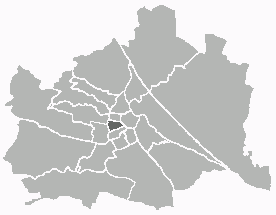
Neubau is the seventh district of Vienna. It is located near the center of Vienna and was established as a district in 1850, but borders changed later. Neubau is a heavily populated urban area, with a major shopping area and residential buildings. It has a population of 32,027 people within an area of 1.61 km² (0.62 sq.mi.).

Mariahilf is the 6th municipal district of Vienna, Austria. It is near the center of Vienna and was established as a district in 1850. Mariahilf is a heavily populated urban area with many residential buildings. It has a population of 31,621 within an area of 1.48 square kilometres (0.6 sq mi).
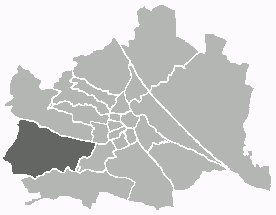
Hietzing is the 13th municipal District of Vienna. It is located west of the central districts, west of Meidling. Hietzing is a heavily populated urban area with many residential buildings, but also contains large areas of the Vienna Woods, along with Schönbrunn Palace.

Josefstadt is the eighth district of Vienna. It is near the center of Vienna and was established as a district in 1850, but borders changed later. Josefstadt is a heavily populated urban area with many workers and residential homes. It has a population of 24,279 people (2014). With an area of 1.08 km2, Josefstadt is the smallest district in Vienna, and was named after the Holy Roman Emperor Joseph I.

Hernals is the 17th district of Vienna, Austria . Hernals is in northwest Vienna. It was annexed in 1892 out of the townships of Hernals, Dornbach, and Neuwaldegg.

Ottakring is the 16th District in the city of Vienna, Austria. It is located west of the central districts, north of Penzing and south of Hernals. Ottakring has some heavily populated urban areas with many residential buildings. It was formed from the independent villages of Ottakring and Neulerchenfeld in 1892.

The Viennese coffee house is a typical institution of Vienna that played an important part in shaping Viennese culture.

Favoriten, the 10th district of Vienna, Austria, is located south of the central districts. It is south of Innere Stadt, Wieden and Margareten. Favoriten is a heavily populated urban area with many residential buildings, but also large recreational areas and parks.
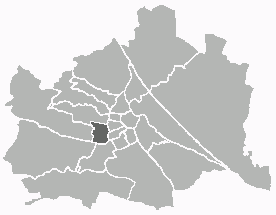
Rudolfsheim-Fünfhaus is the 15th municipal District of Vienna, Austria. It is in central Vienna, west of Innere Stadt.

Penzing is the 14th borough of Vienna and consists of the localities of Penzing, Breitensee, Baumgarten, Hütteldorf and Hadersdorf-Weidlingau. In the west, it shares a border with Purkersdorf and Mauerbach. A large portion of the district is made up of greenery, including the Steinhof park, the Dehnepark and a portion of the Wienerwald.

Kalksburg is a former municipality in Lower Austria that is now a part of the 23rd Viennese district Liesing.
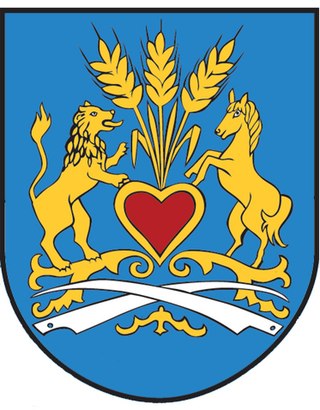
Inzersdorf was before 1938 an independent municipality, and is now a part of the 23rd Viennese district Liesing.

Café Museum is a traditional Viennese café located in the Innere Stadt first district in Vienna. The café opened in 1899. The original interior was designed by renowned architect Adolf Loos. The café became a meeting place for Viennese artists.
Felix Czeike was an Austrian historian and popular educator. He was an author and partly also editor of numerous publications on the history of Vienna and was the director of the Wiener Stadt- und Landesarchiv. His main work is the six-volume Historische Lexikon Wien.
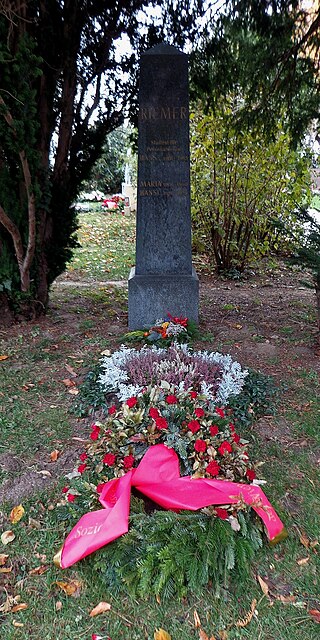
Hans Riemer was an Austrian politician of the Social Democratic Party of Austria (SPÖ). From 1949 to 1956 he was a member of the Bundesrat and from 1956 to 1963 a member of the city council of Vienna.

Fuhrmannhaus is the oldest surviving house in the west of Vienna, Austria. It is part of the 14th borough Penzing.

Klimt Villa is a building located in the Hietzing district of Vienna built in the early 1920s upon the last Viennese studio of the painter Gustav Klimt.



















